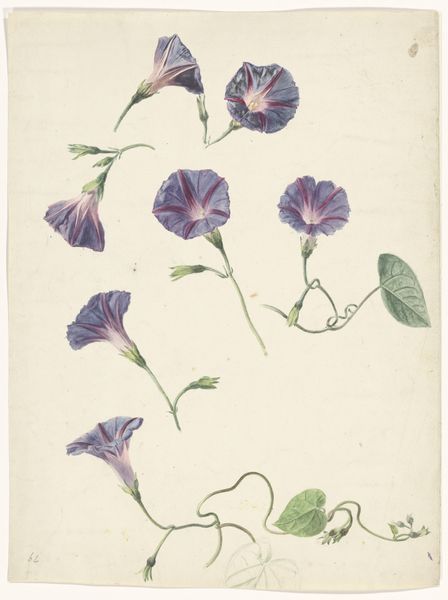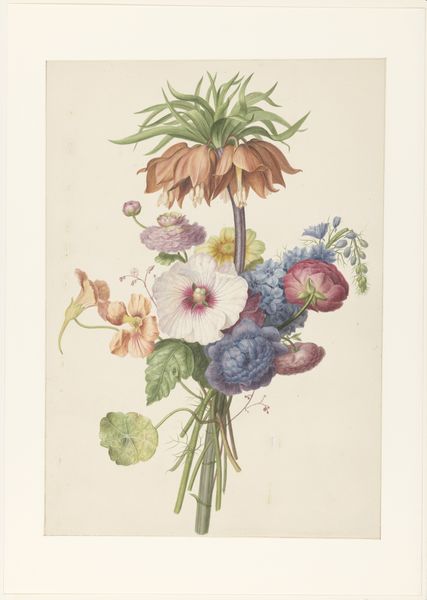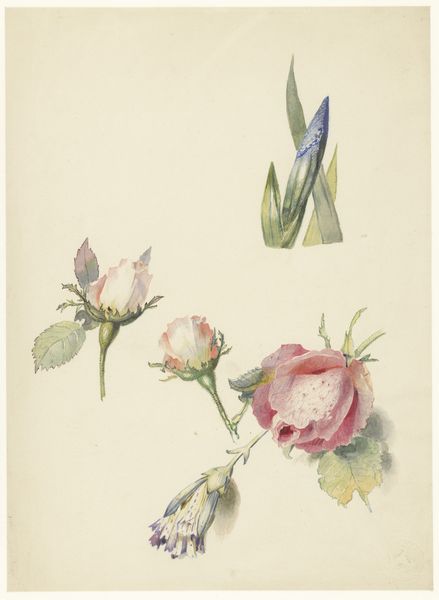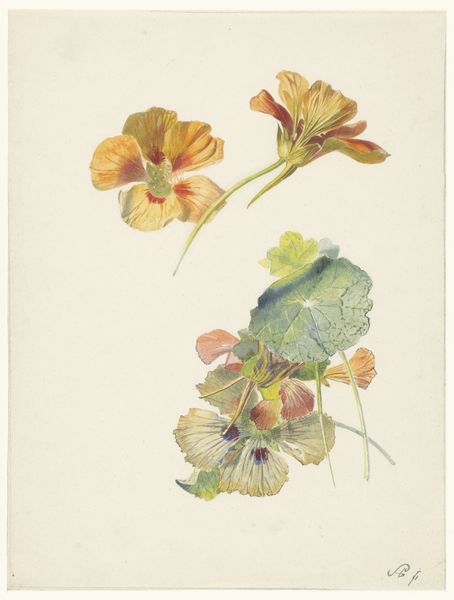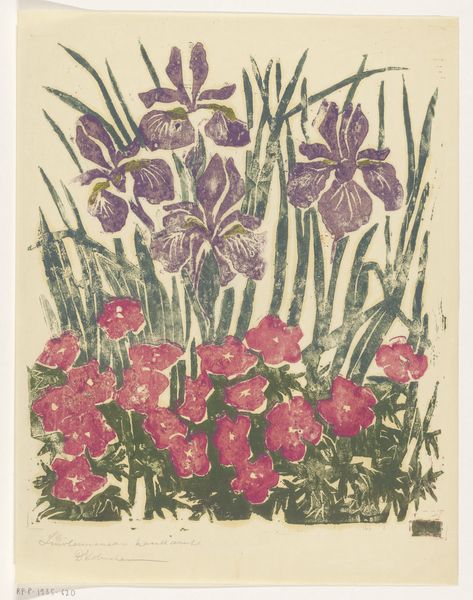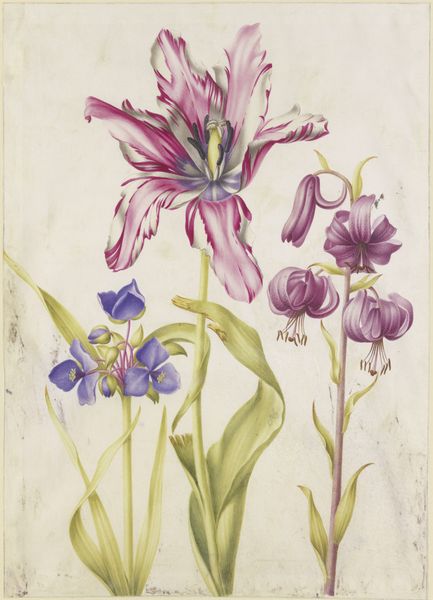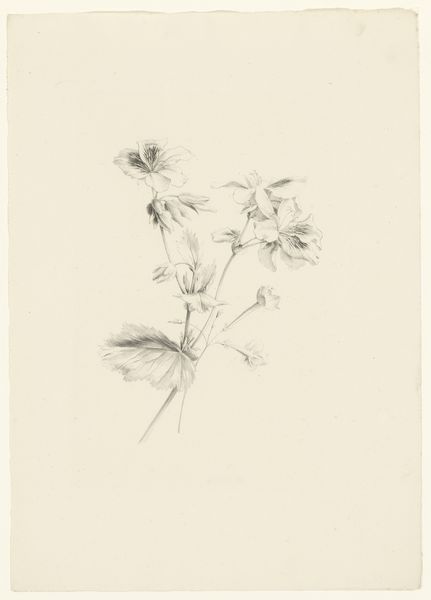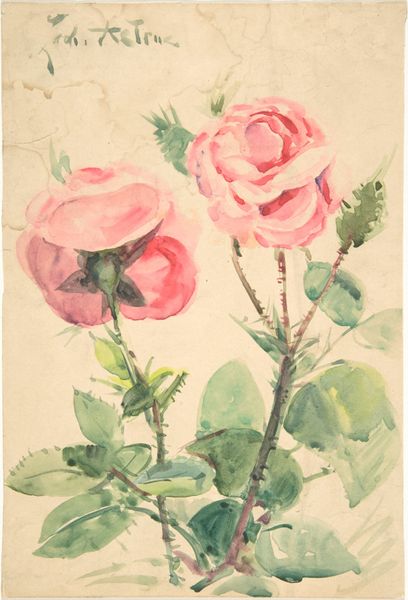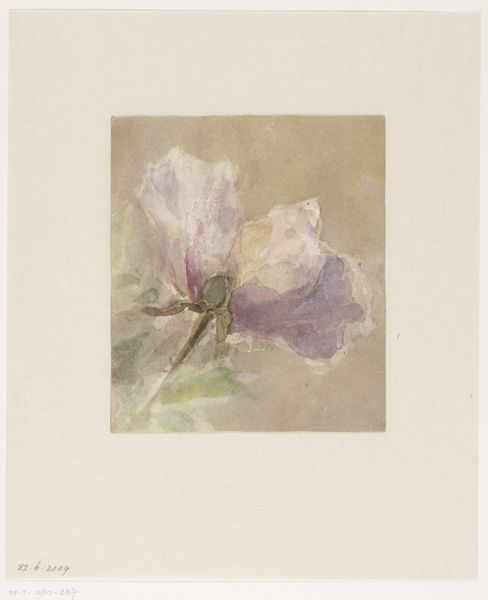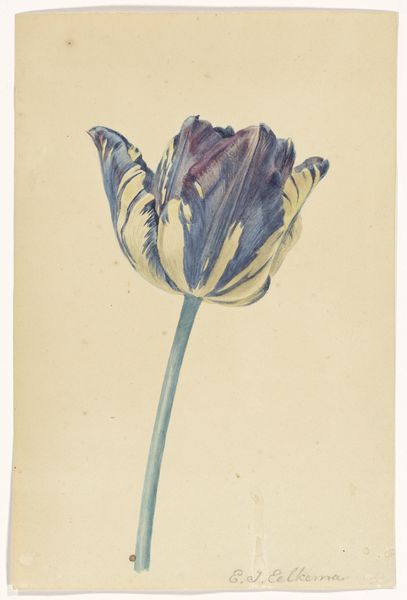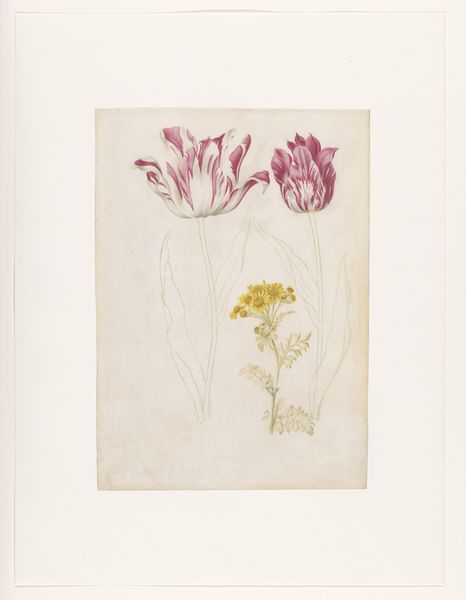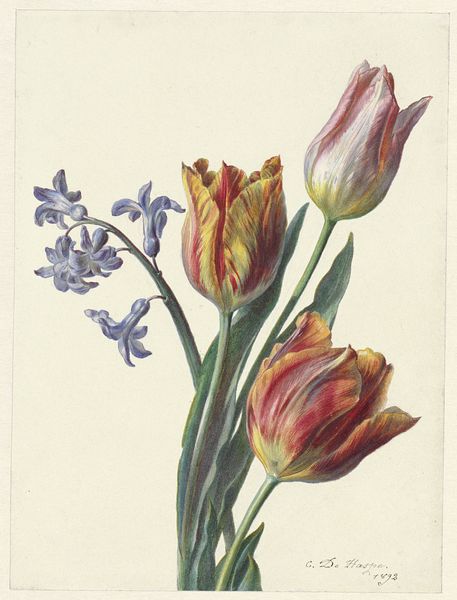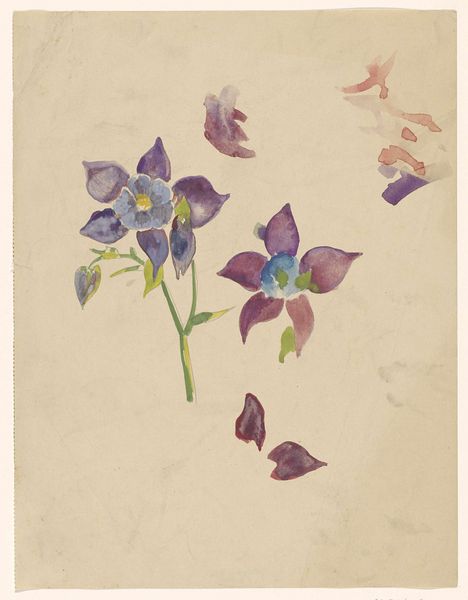
Dimensions: height 284 mm, width 198 mm
Copyright: Rijks Museum: Open Domain
Editor: Here we have Sientje Mesdag-van Houten’s watercolour, "Nieuwjaarsgroet met anemonen", likely from 1896 or 1897. The delicate washes create a wonderfully intimate, almost fleeting, impression. How do you interpret this New Year’s greeting in the context of its time? Curator: It’s interesting to consider this "New Year’s Greeting" as more than just a pleasant sentiment. Floral paintings in the late 19th century, especially by women artists, often provided an acceptable avenue for artistic expression when social constraints limited other subjects. These works became a quiet but persistent assertion of their creative agency. Consider how Mesdag-van Houten, through her impressionistic style, both participates in and subtly deviates from academic expectations for female artists. Editor: That's fascinating! So the very act of choosing flowers was… political, in a way? Curator: Indeed. Furthermore, the impressionistic technique itself challenges established artistic norms, aligning the artist with modern, forward-thinking movements. Did exhibiting this painting in public help the artist's reputation, perhaps contributing to art world trends? Did Mesdag-van Houten belong to any artistic organizations? What purpose do you imagine this painting served, beyond just a personal note? Editor: I hadn't considered the layers of meaning a seemingly simple floral greeting could hold. Understanding the historical context really sheds new light on it. Curator: Precisely. By exploring the societal expectations and artistic conventions of the era, we gain a deeper appreciation for Mesdag-van Houten's artistic choices. Editor: I definitely have a new appreciation for floral paintings now! It's great to think about this piece beyond its obvious aesthetic appeal and recognize the layers of societal meanings behind it.
Comments
No comments
Be the first to comment and join the conversation on the ultimate creative platform.

